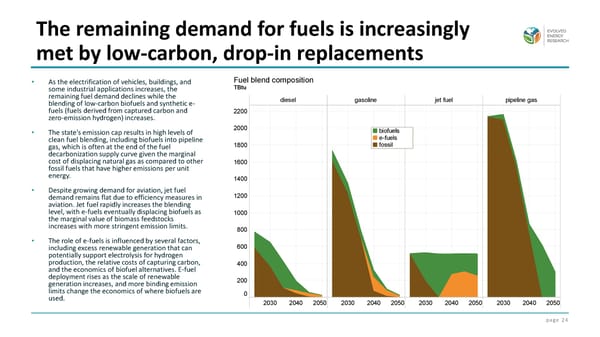page 24 • As the electrification of vehicles, buildings, and some industrial applications increases, the remaining fuel demand declines while the blending of low-carbon biofuels and synthetic e- fuels (fuels derived from captured carbon and zero-emission hydrogen) increases. • The state’s emission cap results in high levels of clean fuel blending, including biofuels into pipeline gas, which is often at the end of the fuel decarbonization supply curve given the marginal cost of displacing natural gas as compared to other fossil fuels that have higher emissions per unit energy. • Despite growing demand for aviation, jet fuel demand remains flat due to efficiency measures in aviation. Jet fuel rapidly increases the blending level, with e-fuels eventually displacing biofuels as the marginal value of biomass feedstocks increases with more stringent emission limits. • The role of e-fuels is influenced by several factors, including excess renewable generation that can potentially support electrolysis for hydrogen production, the relative costs of capturing carbon, and the economics of biofuel alternatives. E-fuel deployment rises as the scale of renewable generation increases, and more binding emission limits change the economics of where biofuels are used. The remaining demand for fuels is increasingly met by low-carbon, drop-in replacements
 Exploring the Value of Vehicle to Grid (V2G) for California Page 23 Page 25
Exploring the Value of Vehicle to Grid (V2G) for California Page 23 Page 25